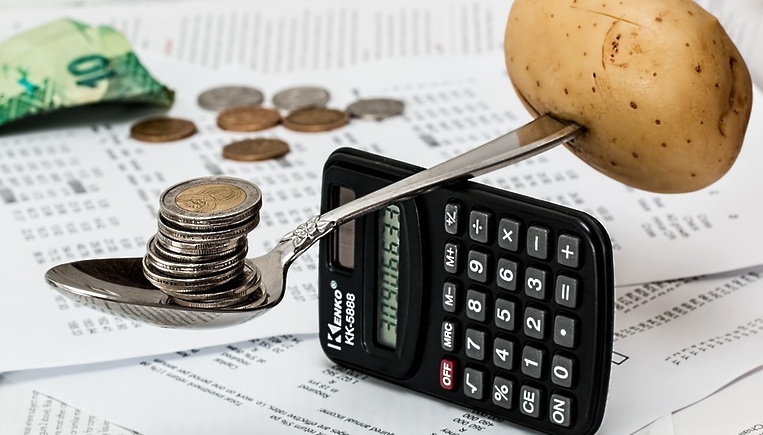Hello!
Saving money would be easy if it were that simple. This is not true. A recent GOBankingRates survey showed that 40% of Americans have fewer savings than $300. Half of the respondents reported having less than $600 in savings and 57.4% had less than $1,000.
 The following are some of the most common reasons people don’t have more money saved:
The following are some of the most common reasons people don’t have more money saved:
- Too much debt
- Being unemployed
- Living in an area where the cost of living is high
Although it may seem impossible to save money, there are simple ways you can cut costs and increase savings. Learn how to save money quickly if you are short on savings. These are some ideas and tools that will help you increase your savings.
12 Ways To Save Money
You may think you’re not a good saver. You can quickly increase your savings by taking advantage of the many ways you can save.
1. Make a grocery list
 Food is one of the most important expenses that you can control. There are many ways to save on groceries. Planning is the first step.
Food is one of the most important expenses that you can control. There are many ways to save on groceries. Planning is the first step.
You can review the ads at grocery stores, plan meals and create a shopping list that you can follow. This will help you avoid impulse buying and make the best purchases. You’ll save gas money by creating a list and ensuring you have everything you need.
The U.S. Department of Agriculture examined average weekly grocery expenses for families who can be classified as low-cost, moderate, liberal, thrifty, or low-cost. According to the U.S. Department of Agriculture’s April 2021 report, a four-person family spends on average $137.30 to $157.60 per week on groceries. A family that spends liberally spends $268.20 to 314.20 per week. The cost range depends on how old the children are.
If the family spends $594.90 per month on groceries, the thrifty family will spend $1,161.90. This is a difference worth $567 per month, or more than $6800 annually.
2. Cook Your Meals at home
While dining out can be fun and a great way to meet new people, it can also quickly add up in cost if you go too often. Ordering takeout once or twice per week can add up. You can cook your meals at home for a fraction of the cost of ordering takeout or dining out.
 Also, you won’t be paying to tip. You also have greater control over the ingredients and the portion sizes you prepare. This can have health benefits that could save you money on medical bills down the line
Also, you won’t be paying to tip. You also have greater control over the ingredients and the portion sizes you prepare. This can have health benefits that could save you money on medical bills down the line
If you are looking for a way to cut down on your expenses, dining out can be a great option. You don’t need to make it a burden if you follow simple recipes and prepare one-pot meals.
If the family spends $594.90 per month on groceries, the thrifty family will spend $1,161.90. This is a difference worth $567 per month, or more than $6800 annually.
MyFridgeFood is a great resource to help you stretch your grocery budget. It tells you what dishes you can make using the ingredients that you have at hand. You will also find step-by-step recipes.
3. Shop Brands
 Store brands are a viable and valuable alternative to name brand products for thrifty shoppers. The Private Label Manufacturers Association estimates that consumers can save up to $40 billion each year by shopping at stores instead of national brands.
Store brands are a viable and valuable alternative to name brand products for thrifty shoppers. The Private Label Manufacturers Association estimates that consumers can save up to $40 billion each year by shopping at stores instead of national brands.
According to the PLMA, studies show that shoppers can save up to one-third on household and grocery items when they shop at local stores over national brands. This is because national brands spend more on advertising which they pass onto consumers.
Large companies often spend as much as 20 cents on every dollar for promotions, advertising, and marketing to increase sales and keep their brand in front of customers. These costs are not covered by store brands, which means they can charge lower prices.
4. How to Cut Unnecessary Expenses
You should consider cutting back on high-cost items if you are unable to save as much as possible. Start by identifying what you can cut back on, and then removing them from your budget. You can also cut fixed monthly expenses like your streaming, TV, or cell phone plan. These are some things you can do to reduce your daily expenses.
5. Transfer credit card balances
 Experian estimates that the average credit card balance for 2020 was $5,315. Let’s say you owe this amount on your credit cards and that you pay an annual percentage rate of 18%. If you were determined to make the payment in 12 months, it would be $488 per month and $442 in interest. Transferring the balance would result in your monthly payments dropping to $443 per month with no interest. That’s an average savings of $540 per month.
Experian estimates that the average credit card balance for 2020 was $5,315. Let’s say you owe this amount on your credit cards and that you pay an annual percentage rate of 18%. If you were determined to make the payment in 12 months, it would be $488 per month and $442 in interest. Transferring the balance would result in your monthly payments dropping to $443 per month with no interest. That’s an average savings of $540 per month.
Also read: How to Start An E-commerce Business From Scratch
6. Clip Coupons to Use Store Apps
If you are one of those people who still grab the Sunday paper, you will know that there are coupons for as low as 25 cents or even $2 on a specific product. These coupons can help you save a lot of money in the long term.
 To get manufacturer coupons, you don’t have to subscribe to a newspaper. You can save money every time you shop by joining the loyalty club at your local store. All you have to do is show your loyalty card. To save even more, you can download the app of your store or register online. You can download coupons from a variety of retailers, including Target, CVS, and your local grocery store. At the cash register, the value is automatically deducted.
To get manufacturer coupons, you don’t have to subscribe to a newspaper. You can save money every time you shop by joining the loyalty club at your local store. All you have to do is show your loyalty card. To save even more, you can download the app of your store or register online. You can download coupons from a variety of retailers, including Target, CVS, and your local grocery store. At the cash register, the value is automatically deducted.
7. Get entertainment for free
You don’t have to spend your money every day sitting at home, worrying about how much fun you are missing. Many entertainment options, such as movies, concerts, movies, and theme parks, are expensive. You might be surprised at the number of free entertainment options.
You can save money by running a $0 entertainment budget for one month. You’ll be able to learn more about entertainment options and it could also be fun to research what is available. These are just a few ideas to help you get started.
8. Refinance your Mortgage
 To take advantage of this money-saving opportunity, you must own a house. If you own a home, make sure it works for you. Now is the best time to refinance your mortgage. Interest rates are at an all-time low in 2022. There are two ways to save money: you can get a lower interest rate and a lower monthly cost.
To take advantage of this money-saving opportunity, you must own a house. If you own a home, make sure it works for you. Now is the best time to refinance your mortgage. Interest rates are at an all-time low in 2022. There are two ways to save money: you can get a lower interest rate and a lower monthly cost.
Refinancing allows you to swap an adjustable-rate mortgage for one with a fixed-rate mortgage or change the term of your home loan. Check rates from different lenders if you are unsure how low your rate might go.
9. Use a budgeting app
Now is the best time to get started with a budget. You can find third-party apps that will help you to get control of your finances and reduce your spending. Mint.com is a popular app that allows you to see exactly where your money is going each month. Another option is YNAB.com, which allows users to create a zero-sum budget and give every dollar earned a job.
Personal Capital, Clarity Money, and Qube Money are other budgeting apps worth considering. Qube Money is a digital version of the cash envelope budgeting software. It also offers functionality that allows users to share expenses with other members of their plan.
 While some apps have a price, not all of them do. Mint, an app that offers many features for free, is a good option if you are tight on funds.
While some apps have a price, not all of them do. Mint, an app that offers many features for free, is a good option if you are tight on funds.
10. Reduce utility expenses
First, do the obvious. This includes turning off lights when you leave a space, closing down your computer when you aren’t using it, turning off your TV when you’re not watching it, and turning off the water faucet if you don’t need it. Other options include taking shorter showers, using cold water to wash your clothes, fixing leaky pipes, and installing LED lightbulbs and dimmer switches in your home.
Although energy-efficient appliances can help you save money on your electricity bill, they are not cheap. They are still worth considering if you have the money to pay them off in the long term. You might be able to save money on your electricity bill, which could make up the cost of buying the appliances.
11. Avoid Wasting Food
Do you remember the old saying “waste not, desire not”? This is true for food. According to the U.S. Department of Agriculture, each family of four throws out $1,500 worth of uncooked food each year. That’s about $125 per month.
 There are several ways that the USDA can reduce food waste:
There are several ways that the USDA can reduce food waste:
- Organize your pantry and refrigerator so food that is likely to expire quickly can be pushed to the front, not shoved back and forgotten.
- To avoid throwing out food, be aware of its expiration date. Keep in mind that some foods can be preserved for a longer period of time than their expiration dates.
- Get the USDA FoodKeeper App to track food storage and expiration dates in your fridge.
- The remaining food and leftovers can be frozen for later use.
- Expiring foods can be used as part of another meal. For example, you could put overripe fruits into a smoothie.
12. Use Your Library
 What number of entertainment services like Netflix, Hulu, and HBO Max do you have? Depending on which plan you choose, you could pay as much as $40 per month if you subscribe to all these services. Many libraries also offer CDs and DVDs free of charge. Libby is an app that allows you to download audiobooks and e-books with your library card.
What number of entertainment services like Netflix, Hulu, and HBO Max do you have? Depending on which plan you choose, you could pay as much as $40 per month if you subscribe to all these services. Many libraries also offer CDs and DVDs free of charge. Libby is an app that allows you to download audiobooks and e-books with your library card.
The bottom line
Now you have concrete ideas for how to save money every month. Saving is a marathon. You need to allow your money to grow over time.
Open a savings account at a local bank, Credit Union, or Online Bank to save your money. Next, use one of the money-saving tips listed above to get started. Keep track of how much you save in the first month. To maximize your savings, incorporate more of these strategies in your financial life.
Thank you!
Subscribe to our newsletter! Join us on social networks!
See you!






